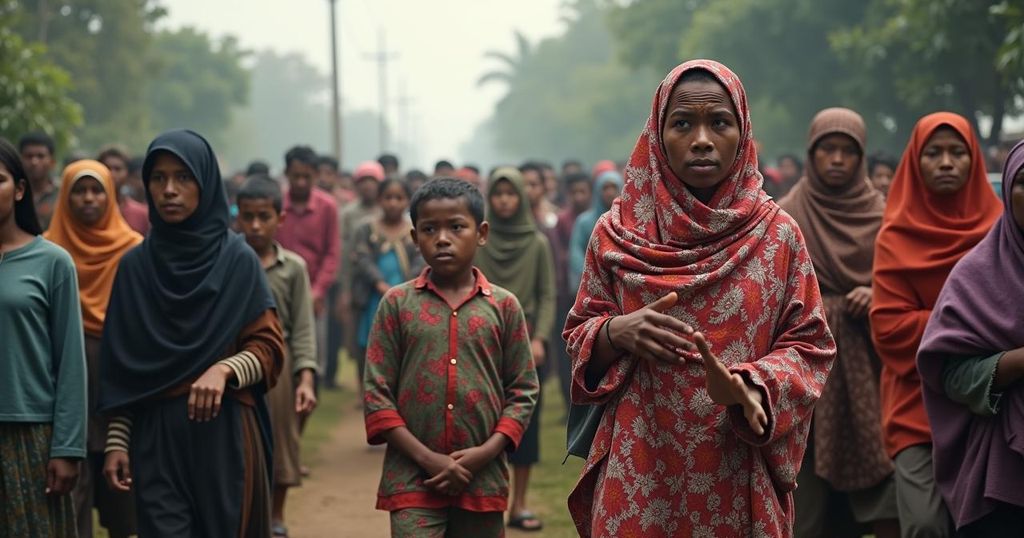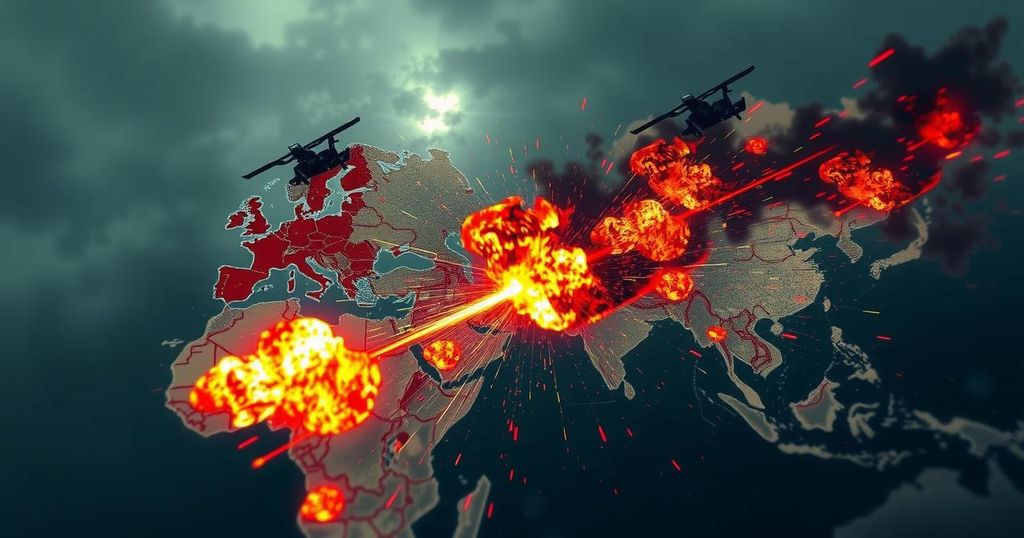Myanmar: Understanding the Recent Rohingya Deaths in Maungdaw
On August 5, 2024, a violent attack in Maungdaw, Myanmar, resulted in the deaths of numerous civilians, amid an escalation of the ongoing civil conflict linked to the military coup in 2021. Eyewitness accounts suggest between 50 and 200 victims, with an absence of clear accountability for the attack. The civil wars have significantly impacted both Rohingya and Rakhine communities, leading to urgent humanitarian crises. Calls for de-escalation and joint local efforts for peace highlight the path forward in addressing the lingering strife in the region.
On August 5, 2024, a tragic incident unfolded in Maungdaw, a town located in Myanmar’s Rakhine State, resulting in the reported deaths of numerous civilians, including women and children. Eyewitnesses suggest the number of victims may range from 50 to 200, although exact figures have yet to be confirmed. This violence is part of the ongoing civil conflict in Myanmar that has escalated since the military coup in February 2021, which overthrew the democratically elected government and heightened ethnic tensions and hostilities. The clash in Maungdaw occurred against the backdrop of a concerted offensive by the Arakan Army (AA), an ethnic Rakhine insurgent group, against the ruling military government known as the State Administrative Council (SAC). On August 4, 2024, the AA initiated an attack on government forces in the area, which led to escalated conflict with various Rohingya militias, including the Rohingya Solidarity Organization (RSO) and to some extent, the Arakan Rohingya Salvation Army (ARSA), both of which have had contentious interactions with the local Rohingya population as they’ve fought alongside government troops. In the lead-up to the violence, the AA issued an evacuation order for the civilian population, predominantly made up of Rohingya, urging them to leave the region. Conversely, the SAC and the Rohingya militias urged individuals to remain, causing many to stay out of concern for their belongings. As the fighting intensified, civilians attempted to flee toward the Naf River, a border with Bangladesh, leading to confusion and panic that resulted in a series of deaths on August 5 and 6. To analyze the chaos and its implications, DW conducted interviews with various sources, including Rohingya activists and humanitarian leaders, and reviewed materials from multiple organizations. Despite efforts to corroborate witness accounts, considerable uncertainty remains surrounding the details of the attacks, with reports often contradictory and unclear. On August 5, Rohingya activist Wai Wai Nu reported a mass killing, and a video shared on social media depicted gruesome scenes. Although DW could confirm the authenticity of the footage — which showed at least 22 bodies — most specifics regarding the perpetrators or the nature of the attack remain ambiguous. Forensic analysis suggests ballistic trauma as the cause of death, but this does not clarify responsibility. The ongoing civil conflict in Rakhine State has also inflicted significant suffering upon the Rakhine people, who are facing severe shortages of essential resources. Humanitarian conditions continue to deteriorate due to blockades instituted by the SAC and ongoing military operations. It is crucial to acknowledge that both communities are bearing the brunt of this violence, with many Rakhine facing displacement and urgent humanitarian needs. As tensions persist, there are calls for de-escalation from both sides, highlighting the urgency to prioritize civilian safety amid escalating hostilities. Observers argue that new avenues for coexistence between the Rohingya and Rakhine populations resting on local cooperation must be sought, as the international community is unlikely to intervene substantially. Overall, the violence in Maungdaw underscores the complexity of the situation in Myanmar, marked by historical grievances, ethnic strife, and the consequences of military rule, with devastating impacts on all communities involved.
The Rohingya crisis in Myanmar has a long and complicated history, marked by ethnic tensions, discrimination, and violence. The Rohingya, a Muslim minority group, have faced systematic persecution for decades, culminating in mass displacement and what many consider ethnic cleansing, particularly during the military operations in 2017 that resulted in over 740,000 Rohingya fleeing to neighboring Bangladesh. The July 2024 clash in Maungdaw occurred amid an ongoing civil war, ignited by the February 2021 military coup that disrupted Myanmar’s democratic processes and intensified armed conflict between various ethnic insurgent groups and the military. The situation has fostered humanitarian crises and increased militarization, exacerbating existing ethnic tensions.
The tragic events that unfolded in Maungdaw reveal the repercussions of the ongoing civil conflict in Myanmar, highlighting the plight of the Rohingya and Rakhine populations caught in the violence. There is an urgent need for clarity and accountability regarding the attacks, as well as a cohesive approach towards humanitarian relief and conflict resolution. All parties must recognize their responsibility to protect civilian lives and seek cooperative measures to foster peace and stability away from the reach of extremist actions. Addressing the underlying issues of political power and ethnic grievances will be crucial in paving the way for lasting peace in the region.
Original Source: www.dw.com








Post Comment